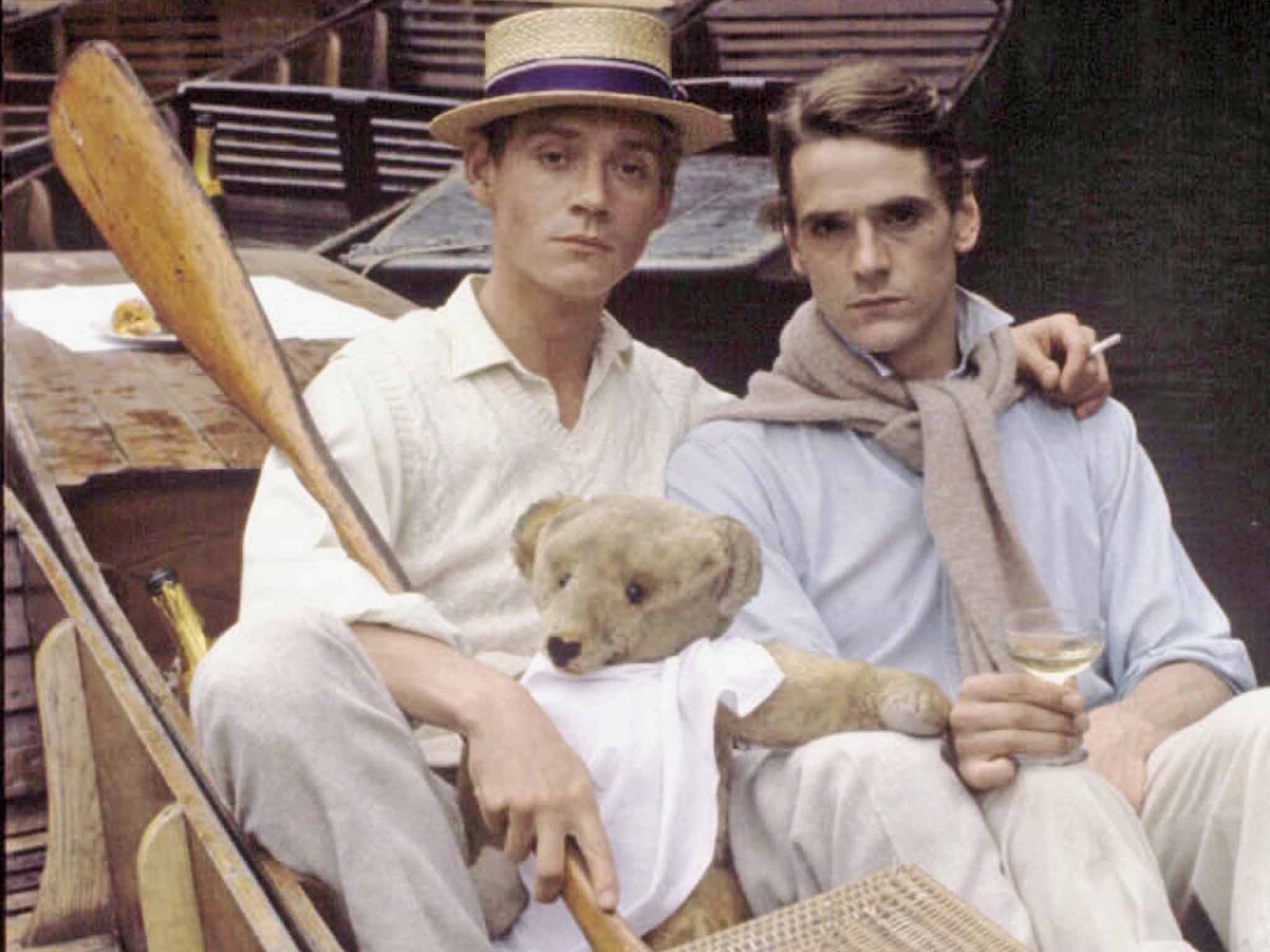Teddy bears for adults: Why a third of students take a teddy bear with them to university
A third of university students take a teddy bear with them, just like Waugh's famous creation. Philippa Perry explains the primal reasons for keeping this childhood attachment

According to a recent study, a third of all students take a teddy bear to university. "Aww," we might say, only worrying slightly that they may be too much like Sebastian Flyte in Brideshead Revisited, who took his bear, Aloysius, to dinner parties, or like the artist Grayson Perry, who seems to revere his own teddy bear, Alan Measles, as a god.
So why the teddy bears? What's happening here? According to the research carried out by the child psychiatrist Professor Winnicott in the 1950s, quite a lot. At the beginning, a child's relationship with a teddy may be largely physical – a first step from sucking their own thumb or fist may be to chewing a teddy's ear – but there is more to it than this. Winnicott states: "It is clear that something is important here other than oral excitement and satisfaction."
The first "not me" object that a baby encounters is the primary carer with the breast or the bottle, and so the second "not me" object often takes on many of the qualities of the first. For example, the ability to cuddle, care for, nurture, feed and generally soothe, so it is not surprising that a lasting bond with this second object, often the teddy bear, is formed. Patterns set in infancy often continue into childhood and beyond so that the teddy bear is still needed, especially at times of stress or loneliness. The step from home and school to university is the last taken as a child, and so it is neat that one of the first objects of childhood, the teddy bear, may also be the last to be relinquished.
So, apart from being a warm cuddle, what else is a teddy bear good for? Winnicott's phrase "transitional object" has passed into everyday use when it comes to talking about teddies or soggy bits of highly prized blanket. But a transitional object isn't merely a replacement for the relationship with a carer when they are not ever-present. There is more to it than that. The transitional object is a symbol for the internal life of its owner.
An internal life may comprise a complex muddle of inchoate needs and their being met and not met; changing narratives that make meanings from emotions and jumble; and symbols for the felt, yet unknown.
The transitional object is part of this inner world, and yet it isn't just a mental concept because it exists in the external world, too. Teddy, if not flesh and blood, is certainly fake-fur and stuffing. One of teddy's jobs is to give an external reality that matches the child's inner life and the child's capacity to create.
An inner life is not easy to articulate with words, and however private we may be, we have a need to have this inner world seen. All of us need human mirrors, people who reflect back to us, in the way they are when they are with us, a picture of ourselves that chimes with our own experience of our identity and essence. We need people who have known us a long time to do this, and when we go to university, there may be no one there who knows us, no one who can mirror back to us the person whom we believe we are. So a teddy, who has been with us from the off, can act as a stand-in for a human mirror for a while. No wonder some new students dare not take their teddies with them to university: what if their teddy were to fall into the wrong hands? Maybe even more than a third of students would take their teddies with them if they could be sure they would be unmolested and safe. Because it might feel as though, if something happened to their bear, then some harm might also happen to the owner's inner world, too.
When we watch a child lost in play, we are seeing the child make sense of the collision between their inner world and the outer reality. When we are young, our teddy bear presides over this treacherous boundary, but as we age, relief from the strain of it is often provided by pop songs, books, arts or religion, and as these aspects gain importance for us, often the meanings we associated with our transitional object fade. But just because we have other ways of dealing with life's conflicts, it doesn't necessarily mean we will relinquish our bears. Winnicott states that the task of accepting external reality is never completed and that no human is free from the tension of relating their inner and outer realities. It's probably unrealistic to assume that we can grow up completely.
Take your bear to uni', kids. Part of you is in that bear.
Philippa Perry is a psychotherapist and author of How to Stay Sane (Pan Macmillan, £7.99)
Join our commenting forum
Join thought-provoking conversations, follow other Independent readers and see their replies
Comments